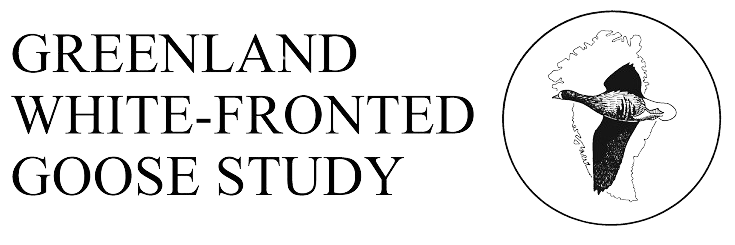Status
Abandoned (R&O 44). Very little was known of these birds which were always highly elusive amongst the large flocks of Greylag Geese using the area. Christopher Headlam regular counted 20-50 Greenland White-fronted Geese at the site in the 1960s-1980s, but numbers were always variable between years and suddenly disappeared altogether in the 1990s (see figure). Despite persistent rumours of other flocks, the Loch Eye was the only regular resort of Greenland White-fronted Geese in eastern Scotland away from the traditional peatland areas of the west and north. It seems that they fed with Greylags on stubbles and reseed, flighting to the Loch to roost, but Christopher Headlam despite knowing the flock well for many years, always found the geese very difficult to locate, using as they did large areas of farmland, hidden amongst other large flocks of grey geese (mainly Greylags) with which they flew to roost. When numbers were at their highest, the flock were present throughout the winter, despite the earlier assertion that they were generally only present in March (A-W 1963). The reasons for the sudden decline and disappearance are completely unknown!
Maximum winter counts:
Breeding success: There are no consistent production data from this site.
Feeding sites and habitat: Loch Eye is a eutrophic lowland loch surrounded by rich agricultural land, with extensive cereal and rootcrop cultivation, reseeded and rough grassland. Geese used to feed out over the Morrich More, an extensive area of dune grassland with wetland communities, as well as feeding in rich agricultural areas along the southern shore of the Dornoch Firth. They fed on arable land, gleaning grain from stubbles, but also on grass ley including some areas adjacent to Loch Eye, but they ranged very widely, making location and census difficult. They fed as far as Pitkerrie (NH8678), Balinroach (NH8176) and Arboll/Balnaha (NH8781, NH8780). In the latter years, the geese seemed to feed more to the west of the bombing range at Morrich More, especially in the Ardmore area (NH7086), where they associated with Greylag Geese which were known to flight across the Dornoch Firth to the Loch Evelix area, although White-fronted Geese were never actually seen on the northern shore there. Before the major and sudden decline in the 1980s, White-fronted Geese were often seen on the brackish slack lochs amongst the dunes of the Morrich More complex, and it is though they may have roosted at the northern tip of the dune system (NH8684) on occasion, which is a known Greylag Goose roost and far less disturbed than the Loch Eye area.
Roosting sites: Loch Eye was almost certainly the predominant roosting site, but they resorted to roosting amongst the large gatherings of Greylag Geese 8 km to the north and elsewhere (see above). R&O (1979) suggested that increased military activity associated with the Morrich More bombing range in the late 1970s caused the birds to move further west up the Dornoch Firth to roost.
Habitat change: The site is very unusual compared to the majority of Greenland White-fronted Goose wintering sites, as the area experiences a very dry continental type climate compared to the more oceanic sites of the north and west of Scotland. Most of their feeding areas were on dry, free-draining and productive soils in an area of long established highly intensive agriculture. There has therefore been no trend in drainage or increasing disturbance that could account for the rapid decline and ultimate disappearance of this flock. The increasing practice of winter sown cereal could have reduced the area of stubble available, but these changes had had little effect on the Greylag Geese of the area at the time of the White-fronts disappearance.
Aircraft disturbance: Morrich More is a NATO bombing range and in the 1980s and 1990s was constantly disturbed by low flying aircraft and bombing activities. The use did increase up until the 1980s and of course the aircraft have been faster and noisier in recent years. Nevertheless, the range has been in active service since the Second World War and it seemed that the geese had become habituated to this source of disturbance.
Hunting disturbance: Some intertidal wildfowling went on in the Inver Bay area and throughout there is general wildfowling and hunting for Greylag Geese.
Agricultural disturbance: On non-flying days, there was generally little disturbance in the Morrich More area and elsewhere throughout the winter disturbance is relatively light away from the few areas with daily feeding of stock. These factors and the fact that the geese ranged so widely over somny potential alternative feeding areas suggest that this factor was not significant and unlikely to have contributed to the decline in this little flock.
Site safeguards or disturbance refuge: Loch Eye is an NCR SSSI. It was designated as a Ramsar Site and SPA in 1986. The Morrich More is also NCR SSSI and the geese also used parts of the Dornoch Firth SSSI and Dornock Firth and Loch Fleet SPA.
SNH Natural Heritage Zones/Area: Orkney and Northern Caithness.
Threats: Not known and the reasons for the decline and extinction remain unknown.
Linkages with other sites: None
